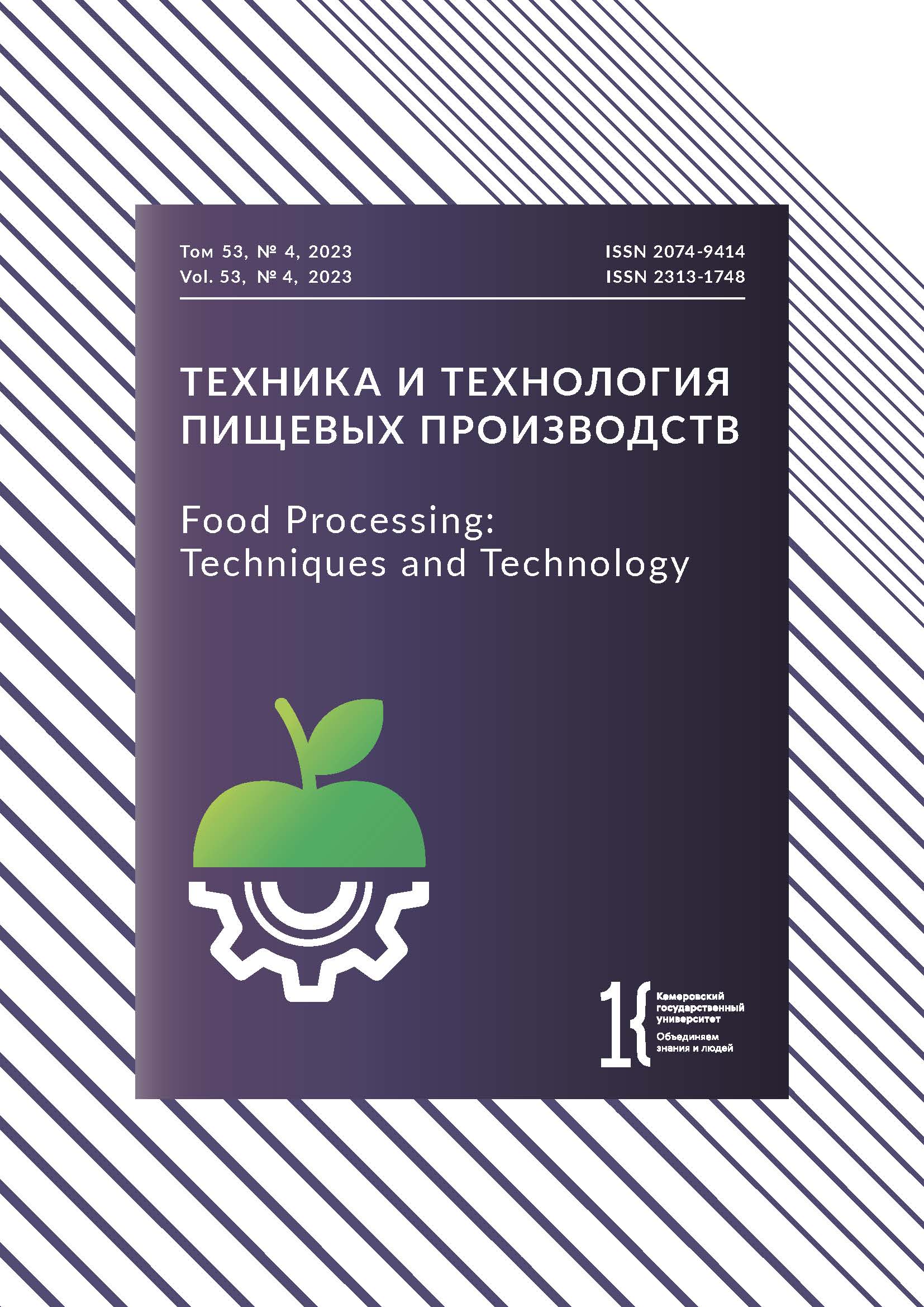Yekaterinburg, Russian Federation
Yekaterinburg, Russian Federation
Yekaterinburg, Russian Federation
Yekaterinburg, Russian Federation
Yekaterinburg, Russian Federation
Yekaterinburg, Russian Federation
Antibiotics have long been overused for non-therapeutic purposes. As a result, Escherichia, Enterobacter, Klebsiella, and Proteus in avian microbiomes have become reservoirs for genetic determinants of resistance, thus spreading resistance to antibiotics and contaminating raw materials and finished products. The food industry is looking for alternative means to preserve health and maintain high productivity of commercial poultry, e.g., probiotics, phytobiotics, organic acids, etc. The research featured the effect of antibiotics and phytobiotics on enteropathogenic bacteria in the microbiomes of broiler chicken. Escherichia coli bacteria were cultivated in vitro in subthreshold concentrations on nutrient media with antibiotics for 37 days to study the effect of low doses of antibiotics on the sensitivity of isolates. The study involved microbiocenoses of broiler chicken that received avilamycin A and a phytobiotic based on Brassica juncea, Linum usitatissimum, and Nigella sativa L. A set of experiments covered the species composition of opportunistic Enterobacteriaceae, the phenotypic sensitivity to antibiotics, and the genetic determinants of resistance, as well as the antimicrobial potential of phytobiotics. E. coli developed no resistance for 37 days when the antibiotic dose remained below minimal inhibitory. Opportunistic gram-negative Enterobacterales predominated in all litter samples. E. coli, Klebsiella pneumoniae, and Proteus mirabilis accounted for more than 30% of all isolated strains. Avilamycin A and the phytobiotic affected the coccal microflora but had no effect on the genus-species composition of Enterobacteriaceae. Litter samples from both experimental and control groups demonstrated K. pneumoniae with severe phenotypic resistance to ciprofloxacin, as well as blaDHA genes. In broiler farming, maintenance and circulation of resistance agents depends on litter microbiota. In this research, the chicken that received the phytobiotic showed the lowest level of resistance to ciprofloxacin while the groups that received avilamycin A had the highest resistance results. During a broiler’s life span, bacteria with no active resistance determinants in their genome remained sensitive to antibiotics, even though the contact with the latter was constant. Phytobiotics showed good prospects for broiler farming as food additive that could reduce and eventually eliminate the intake of antibiotics.
Antibiotic resistance, enterobacteria, antibiotic, phytobiotic, microbiome, broilers
1. Chaplygina OS, Prosekov AYu, Vesnina AD. Determining the residual amount of amphenicol antibiotics in milk and dairy products. Food Processing: Techniques and Technology. 2022;52(1):79-88. (In Russ.). https://doi.org/10.21603/2074- 9414-2022-1-79-88
2. Li X, Aly SS, Su Z, Pereira RV, Williams DR, Rossitto P, et al. Phenotypic antimicrobial resistance profiles of E. coli and Enterococcus from dairy cattle in different management units on a central California dairy. Clinical Microbiology. 2018;7. https://doi.org/10.4172/2327-5073.1000311
3. Spera AM, Esposito S, Pagliano P. Emerging antibiotic resistance: Carbapenemase-producing enterobacteria. Bad new bugs, still no new drugs. Infezioni in Medicina. 2019;27(4):357-364.
4. Gregova G, Kmet V. Antibiotic resistance and virulence of Escherichia coli strains isolated from animal rendering plant. Scientific Repots. 2020;10. https://doi.org/10.1038/s41598-020-72851-5
5. Lalak A, Wasyl D, Zając M, Skarżyńska M, Hoszowski A, Samcik I, et al. Mechanisms of cephalosporin resistance in indicator Escherichia coli isolated from food animals. Veterinary Microbiology. 2016;194:69-73. https://doi.org/10.1016/j.vetmic.2016.01.023
6. Ranjbar R, Moradi H, Harzandi N, Kheiri R, Khamesipour F. Integron-associated antibiotic resistance patterns in Escherichia coli strains isolated from human and animal sources in two provinces of Iran. Modern Technologies in Medicine. 2019;11(4):64-72. https://doi.org/10.17691/stm2019.11.4.07
7. Buberg ML, Mo SS, Sekse C, Sunde M, Wasteson Y, Witsø IL. Population structure and uropathogenic potential of extended-spectrum cephalosporin-resistant Escherichia coli from retail chicken meat. BMC Microbiology. 2021;21. https://doi.org/10.1186/s12866-021-02160-y
8. Chaplygina OS, Kozlova OV, Zharko MYu, Petrov AN. Assessing the biological safety of dairy products with residual antibiotics. Food Processing: Techniques and Technology. 2023;53(1):192-201. (In Russ.). https://doi.org/10.21603/2074-9414-2023-1-2427
9. Bezborodova NA, Sokolova OV, Shkuratova IA, Ryaposova MV, Lysova YaYu, Isakova MN, et al. Sensitivity and resistance of the microbiota of reproductive organs and mammary gland of cows to anti-microbial agents in cases of inflammation. International Journal of Biology and Biomedical Engineering. 2020;14:49-54. https://doi.org/10.46300/91011.2020.14.8
10. Reshadi P, Heydari F, Ghanbarpour R, Bagheri M, Jajarmi M, Amiri M, et al. Molecular characterization and antimicrobial resistance of potentially human-pathogenic Escherichia coli strains isolated from riding horses. BMC Veterinary Research. 2021;17. https://doi.org/10.1186/s12917-021-02832-x
11. Poirel L, Madec J-Y, Lupo A, Schink A-K, Kieffer N, Nordmann P, et al. Antimicrobial resistance in Escherichia coli. Microbiology Spectrum. 2018;6(4). https://doi.org/10.1128/microbiolspec.ARBA-0026-2017
12. Al'-Hammash NM, Ignatenko AV. Analysis of antibiotics resistance of E. coli microorganisms. Proceedings of BSTU. № 4. Chemistry, Organic Substances Technology and Biotechnology. 2012;151(4):173-175. (In Russ.). https://www.elibrary.ru/SNMKSX
13. Velasova M, Smith RP, Lemma F, Horton RA, Duggett NA, Evans J, et al. Detection of extended-spectrum β-lactam, AmpC and carbapenem resistance in Enterobacteriaceae in beef cattle in Great Britain in 2015. Journal of Applied and Microbiology. 2019;126(4):1081-1095. https://doi.org/10.1111/jam.14211
14. Paitan Y. Current trends in antimicrobial resistance of Escherichia coli. In: Frankel G, Ron EZ, editors. Escherichia coli, a versatile pathogen. Cham: Springer; 2018. pp. 181-211. https://doi.org/10.1007/82_2018_110
15. Kaushik P, Anjay, Kumari S, Dayal S, Kumar S. Antimicrobial resistance and molecular characterisation of E. coli from poultry in Eastern India. Veterinaria Italiana. 2018;54(3):197-204.
16. Madec J-Y, Haenni M, Nordmann P, Poirel L. Extended-spectrum β-lactamase/AmpC- and carbapenemase-producing Enterobacteriaceae in animals: A threat for humans? Clinical Microbiology and Infection. 2017;23(11):826-833. https://doi.org/10.1016/j.cmi.2017.01.013
17. Köck R, Daniels-Haardt I, Becker K, Mellmann A, Friedrich AW, Mevius D, et al. Carbapenem-resistant Enterobacteriaceae in wildlife, food-producing, and companion animals: A systematic review. Clinical Microbiology and Infection. 2018;24(12):1241-1250. https://doi.org/10.1016/j.cmi.2018.04.004
18. Rozwandowicz M, Brouwer MSM, Fischer J, Wagenaar JA, Gonzalez-Zorn B, Guerra B, et al. Plasmids carrying antimicrobial resistance genes in Enterobacteriaceae. Journal of Antimicrobial Chemotherapy. 2018;73(5):1121-1137. https://doi.org/10.1093/jac/dkx488
19. Özbudak S. Phytobiotics and their roles in broiler nutrition. Journal of Poultry Research. 2019;16(1):23-29. https://doi.org/10.34233/jpr.465575
20. Sethiya NK. Review on natural growth promoters available for improving gut health of poultry: An alternative to antibiotic growth promoters. Asian Journal of Poultry Science. 2016;10(1):1-29. https://doi.org/10.3923/ajpsaj.2016.1.29











